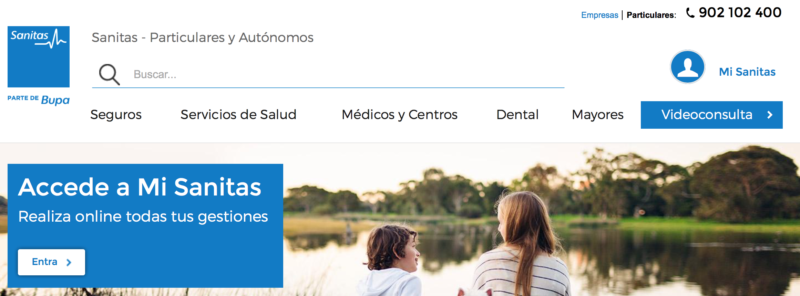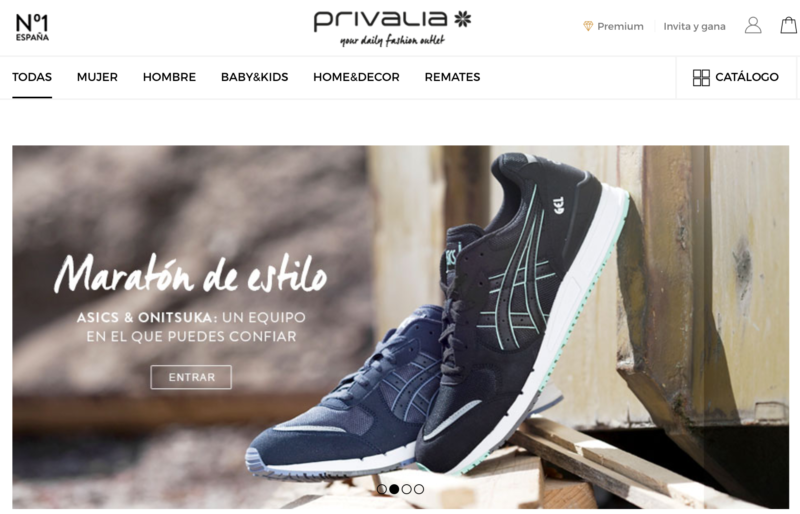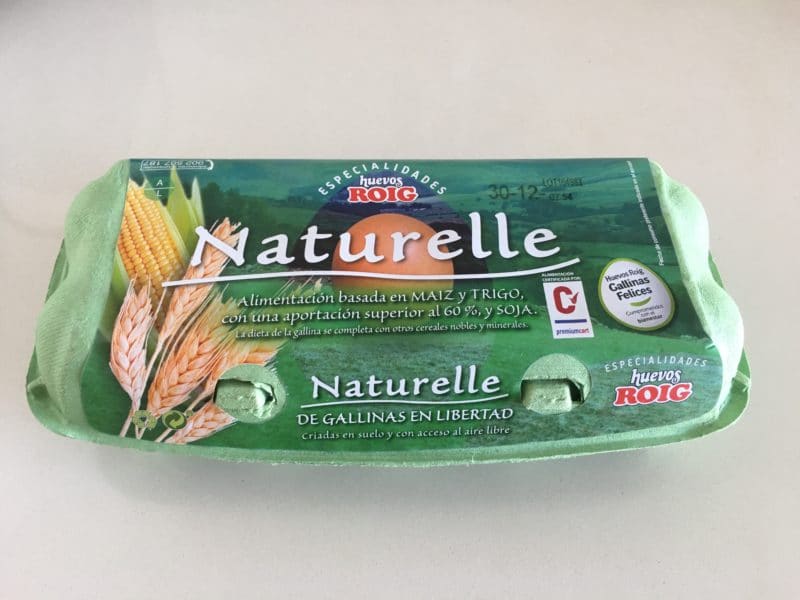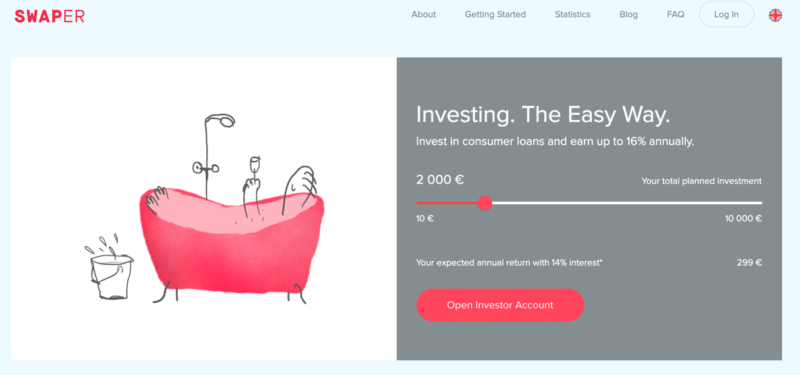If you are an expat in Spain and you’re looking for private health insurance, there are three major players worth seriously considering: Sanitas, AXA, and Adeslas. Each offers unique strengths depending on your priorities—be it global flexibility, national coverage, or doctor freedom.
Let’s take a look at all three so you can make an informed choice.
Sanitas – Established, Tech-Forward, and Strong for Preventive Care
Sanitas is one of the oldest and best-known private health insurers in Spain, founded in 1954 and now part of the BUPA group. They’re a popular choice among both Spaniards and expats, with nearly 2 million members and a strong focus on innovation in healthcare.
In my experience, Sanitas stands out for its emphasis on preventive care. If you’re someone who likes doing regular checkups, bloodwork, scans, and tracking your health even when you’re not sick, Sanitas won’t get in your way. They actively support proactive health management and have some of the most developed digital tools for booking appointments, managing claims, and accessing test results.
Sanitas plans include access to a network of over 500 private clinics and 27,000 medical professionals. You can also opt for their reimbursement-based plans like Mas Salud or International Residents, which allow you to visit doctors and clinics outside their network and get up to 90% reimbursed. International coverage is solid with these premium plans, which is ideal if you split time between countries or want a safety net while traveling.
A major caveat, however, is that Sanitas also owns many of the clinics and hospitals in its network. This vertical integration can lead to financial incentives that drive higher volumes of consultations and tests. It’s something I’ve personally experienced—being sent for a barrage of diagnostics that didn’t necessarily lead to better care. More on that below.
Recommended Plan: Sanitas MAS 90.000
One particularly strong plan to consider is Sanitas Más 90.000. It combines the convenience of Sanitas’ extensive Spanish network with generous reimbursement—up to 90% for consultations, diagnostics, and hospital care both inside and outside their network. It’s a solid choice if you want the option to see high-end specialists in Barcelona or elsewhere in Spain, as well as occasional visits abroad. The plan also includes worldwide emergency coverage up to €10,000, making it a good hybrid for people who don’t travel constantly but want peace of mind when they do.
This tier is also compatible with their slick digital infrastructure—allowing you to book, manage, and track appointments and reimbursements through their app. If you’re used to tech-forward service and want premium support without going all the way to a full international policy, Sanitas Más 90.000 offers a smart middle ground.
AXA – Maximum Freedom and Strong International Focus
AXA is a great option for those who want to keep full control over who they see, where they get treated, and what country they’re in when it happens. Their Óptima Plus plan is one of the few that truly allows global freedom, reimbursing up to 90% for private care, even outside Spain.
The stand-out feature here is the flexibility: you’re not limited to a network. You can see any doctor or specialist, whether they’re affiliated with AXA or not. This makes AXA particularly appealing if you already have trusted medical contacts, travel often, or simply don’t want your healthcare choices limited by administrative restrictions.
AXA doesn’t run its own hospitals or clinics, which means it acts purely as an insurer. This can reduce conflicts of interest—doctors are not pressured to push services or treatments based on internal billing incentives. The company has a strong reputation for professionalism and transparent communication, though I’d recommend working with a knowledgeable broker to help you navigate the claim and reimbursement processes efficiently.
In cities like Barcelona, AXA also has partnerships with a wide array of clinics and specialists, and while you’re not locked into their network, the existing relationships often make it easier to arrange high-quality care quickly.
AXA does not offer an international medical policy, but all of its health insurance products include emergency services abroad up to €15,000 for medical expenses, repatriation, pharmaceuticals, etc. This coverage is only available if the stay outside Spain does not exceed 60 days.
Recommended Plan: AXA Óptima Plus – True Global Freedom
If you want zero limitations on where you go for treatment, AXA’s Óptima Plus plan is probably the gold standard in Spain. With this plan, you’re not confined to any specific network—you can go to any doctor or clinic in Spain or abroad, and AXA will reimburse up to 90% of your medical expenses.
It’s especially useful if you’re the kind of person who likes getting second opinions or wants access to specialists at top-tier clinics without jumping through hoops.
You’ll usually pay upfront and submit for reimbursement—a bit of admin, yes, but worth it for the peace of mind.
Adeslas – Massive Network and Solid Reimbursement Inside Spain
Adeslas is Spain’s largest private health insurer by membership, and that scale brings certain advantages—especially if you plan to stay mostly within Spain. Their Plena Extra plan includes a broad provider network and also offers up to 80-90% reimbursement for out-of-network care within the country.
Adeslas doesn’t focus as heavily on international coverage as AXA or the top-tier Sanitas plans, but for care within Spain, they are hard to beat. They have an especially strong presence in Catalonia and Barcelona, with excellent coverage for everyday medical needs, dental care, and diagnostics.
The app and digital services aren’t quite as slick as Sanitas’, but they’re functional and reliable. Many clinics are well-integrated with their system, so administrative friction is relatively low.
If you’re mostly staying within Spain and want the ability to consult top doctors even if they’re not listed in the network, Adeslas gives you flexibility at a very competitive price. It’s a good middle ground between affordability and freedom.
Recommended Plan: Adeslas Plena Extra – A Solid Local Option with Flexibility
Adeslas, Spain’s biggest health insurer, offers the Plena Extra plan, which lets you use providers both inside and outside their network. While the international coverage isn’t as strong as AXA’s, they offer reimbursement of up to 80-90% for services outside their network within Spain.
If you primarily stay in Spain and want access to top clinics and doctors even if they’re not on the official list, Adeslas is a compelling choice.
Be Wary of Incentivized Care
One downside I experienced with Sanitas is something that could easily go unnoticed until you’re in a more complicated medical situation. Since Sanitas owns many of its own clinics and facilities, they don’t just make money from your insurance premium—they also profit from every test, consultation, or scan you undergo.
Here’s how it works: Sanitas operates under a vertically integrated model. That means the insurer and the healthcare provider are often the same entity. So when you go in for an MRI or a specialist consultation, you’re not paying out-of-pocket—but the “insurance arm” of Sanitas still pays the “clinic arm” of Sanitas. It’s an internal transaction, but it registers as revenue for the group. Multiply this across millions of members and you can see how volume of care can quickly become a profit engine.
Why would they do this? Because even though you’re not being charged directly, Sanitas records each service as income on the provider side. This boosts their overall revenue numbers, which matters for multiple reasons: internal performance metrics, executive bonuses, and even external investor perception if they ever go public or report to a parent company (like BUPA). More services, more revenue, better financial optics.
What’s more, this system creates pressure at the doctor level too. In Sanitas-run clinics, doctors are often incentivised based on how many patients they see—not necessarily how well they treat each case. The more appointments they can fit into a day, the more they are rewarded. This can lead to rushed consultations, little time for in-depth discussion, and a general pressure to move quickly. Personalised care can take a backseat to volume.
Now consider how differently it works when you visit a doctor outside the insurance system altogether—someone who is paid directly by you, who has no contract with any insurer, and who isn’t being timed or tracked for throughput. They usually take the time to understand the full context of your issue, because their incentive is your satisfaction and results—not volume.
In my case, a slightly complex health issue led to a barrage of appointments and diagnostics that felt more like protocol-driven box-checking than thoughtful care. It started to feel like I was being managed by a system optimised for throughput rather than results.
That’s why I now strongly lean toward reimbursement-based plans. They give you the freedom to consult independent doctors who aren’t financially tied to your insurer and may be more focused on getting to the root of your issue efficiently, not just running through a checklist.
And here’s another thing to keep in mind: if you’re visiting a Sanitas-owned clinic but you’re insured by another company (say, AXA or DKV), you’re not as valuable a patient from their internal accounting perspective. The clinic gets reimbursed at a fixed rate, often less profitable than seeing their own insured members. That means in some cases, priority or appointment availability could subtly favor Sanitas-insured patients. It’s not necessarily malicious—just economics.
Bottom line: If budget allows, go for full reimbursement plans with international coverage. SANITAS, AXA, and Adeslas all offer this flexibility, and it can make a huge difference when you need it most.
Public Health System
Depending on whether you’re employed in some form and contributing to social security, you might also be entitled to make use of the public health system in Spain. I’ve found it to be very good, particularly for major interventions and long-term care.
However, there are a couple of things to be aware of. Appointments in the public system are often extremely brief—around 7 minutes per consultation. This can be frustrating if you have something nuanced or more complex to explain. And for anything that’s not considered urgent, you may end up on a waiting list. These lists can be long, especially for surgeries or specialist visits. So if timing is critical, you might find yourself waiting longer than you’d like.
Personally, while I think the public system is excellent for what it offers, I still prefer to have private insurance alongside it. It’s surprisingly affordable in Spain and ensures you can get quick access to diagnostics, specialists, and second opinions without delays. That said, for specific types of care—like childbirth—the public system can actually be the better option.
A Note on Pregnancy and Childbirth
While private health insurance has many advantages, one area where I would strongly recommend using the public health system in Spain is pregnancy and childbirth.
Everything in the private sector is driven by efficiency and profit—and that directly affects how childbirth is handled. Private hospitals often operate under time constraints and financial incentives that can work against the mother’s wishes. For example, they are typically reimbursed more for a cesarean section than for a natural birth. That means as soon as a delivery slows down or strays from the standard timeline, there’s a real risk that the medical team will start nudging toward a cesarean—not necessarily because it’s needed, but because it’s faster, more predictable, and better for their bottom line.
In contrast, Spain’s public hospitals are much more respectful of the mother’s birth plan and tend to work with a more holistic, patient-centered approach. One standout example is Sant Joan de Déu in Barcelona, which is known for its exceptional maternity care. They do everything possible to support natural birth and honor the mother’s preferences throughout the process. The staff are used to working with diverse families and international parents, and the environment feels far more supportive and empowering than many of the private clinics I’ve encountered.
So even if you’re fully covered with private insurance, I’d recommend considering the public system for this stage of life. It might take a little more planning in terms of paperwork and waiting lists, but when it comes to something as important and sensitive as childbirth, the public system in Spain can actually offer a more human, respectful experience.
My Recommendations
Always choose plans with no co-payments and coverage beyond the insurer’s own network. It might cost a little more monthly, but it frees you from the stress of wondering what’s covered and what’s not when something serious comes up. You want to be able to see the best doctors, in the best clinics, anywhere you happen to be—no compromises.
I’ve personally found that while SANITAS is good, the financial incentives of private healthcare mean you sometimes get pushed into unnecessary appointments or tests. Having the freedom to seek second opinions or alternative treatment paths—especially internationally—is invaluable.
I will be switching to AXA and will report back here about my experience with them. Most of my friends are with one of these three insurers, so I feel comfortable recommending the three of them.















